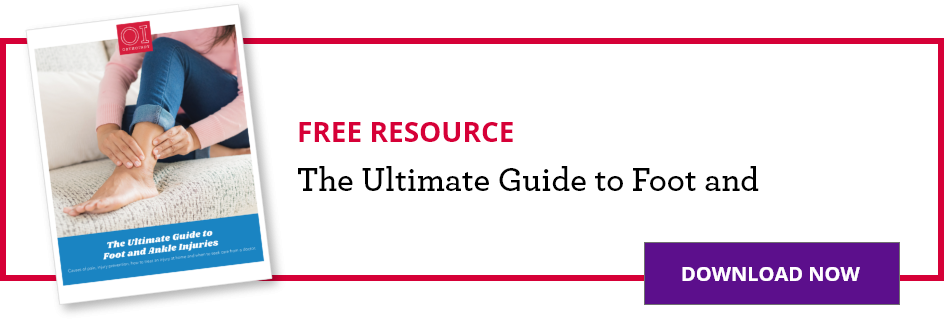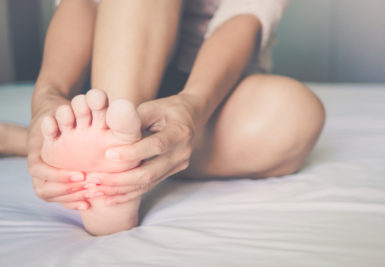THIS POST IS PART OF THE ULTIMATE GUIDE TO FOOT AND ANKLE INJURIES
Sometimes when a child walks or runs, the feet turn inward instead of pointing straight ahead. This is commonly referred to as intoeing or being “pigeon-toed.”
A parent may notice intoeing when a baby begins walking.
Types of intoeing
- Metatarsal adductus: The foot turns inward
- Tibial torsion: The shinbone turns inward
- Femoral anteversion: The thighbone turns inward
What causes a child’s foot to turn in?
Intoeing conditions may run in families. Because intoeing is typically a developmental or a genetic problem it cannot be prevented.

Does pigeon-toed correct itself?
Intoeing will almost always correct itself without any treatment. Additionally, intoeing does not cause pain or lead to arthritis. If your child’s intoeing is associated with pain, swelling or a limp, consult an orthopedic surgeon. Specific treatment depends on your child’s intoeing condition.
MAKE AN APPOINTMENT WITH AN ORTHOINDY ORTHOPEDIC PEDIATRIC SPECIALIST
Intoeing treatment
Metatarsal adductus treatment
Severe cases of metatarsal adductus may resemble clubfoot but resolve in the first four to six months of a child’s life. If it does not go away on its own, a cast or special shoe may help correct the deformity. Surgery is rarely required.
Tibial torsion treatment
As a child grows, the tibia usually untwists on its own. Typically this occurs around 4 or 5 years old. If tibial torsion does not go away on its own by the time the child is 8 to 10 years old and the twist is so severe that is causes walking problems, surgery is necessary to reset the bones.
Femoral anteversion treatment
Femoral anteversion is more obvious at about 5 or 6 years old. The thighbone near the hip has an increased twist, which causes the hip to turn inward more than outward. Both the knees and feel will point inward during walking.
Femoral anteversion almost always corrects itself as children grow older. Surgery is almost never considered until the child is 9 or 10 years old and has a severe deformity that causes tripping. Surgery involves cutting the femur and rotating it into proper alignment.
Learn more about pediatric orthopedic care at OrthoIndy.
Schedule an appointment
Your well-being is important to us. Click the button below or call us to schedule an appointment with one of our orthopedic specialists. If your injury or condition is recent, you can walk right into one of our OrthoIndy Urgent Care locations for immediate care. For rehabilitation and physical therapy, no referral is needed to see one of our physical therapists.





